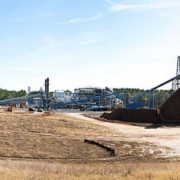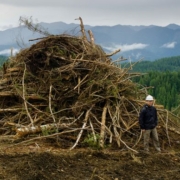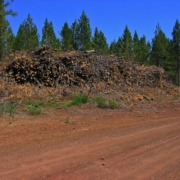Wood-Based Nanotechnology
Wood-Based Nanotechnology
The need for the replenishment of our nation’s forests is critical to the overall conservation effort, and since forests provide so much oxygen for the atmosphere, they are also critical to the health and welfare of all living, breathing creatures. Woody biomass, which is comprised of all the excess fallen limbs, needles, etc. from dead or burned trees and it is constantly accumulating in forests around the world. Nanotechnology can come into play to help find a use for woody biomass because biomass can be processed into many useful things.
 What is wood-based nanotechnology?
What is wood-based nanotechnology?
Nanotechnology refers to the science of researching the unique properties of materials at smaller than microscopic levels. By gaining an understanding of the chemistry and properties of the molecular elements in wood, scientists can find out ways which these properties may be used advantageously for new product development.
The promise of woody biomass nanotechnology also holds an enormous potential to transform the existing North American forest industry in every aspect of its current operation. Production processes can be improved upon, energy efficiencies can be gained, diverse products can be developed from paper and composite materials. Brand new products that are stronger and lighter than Kevlar and carbon fiber can be created from wood-based cellulose nanocrystals.
Previously, there has been very little market for decaying woody biomass on forest lands and with no high-value market for such material, it has not been economically feasible to remove or otherwise consume that biomass. Simply put, the supply of woody biomass is far greater than the demand. With the new uses of wood-based biomass being discovered through nanotechnology, those missing high-value markets are now becoming available, and woody biomass can be cleared economically from sustainably managed forests.
Aiding in fire prevention
With woody biomass being reduced from over-vegetated forest lands, the risk of forest fires is vastly reduced, and since over half the budget for the U.S. Forest Service is allocated to fighting forest fires, management of forests would be much more cost effective. A great deal of property and even a significant number of lives would also be saved by lowering the incidence and severity of forest fires, which now ravage woodlands having excessive biomass.
At the heart of these two important initiatives – developing new wood-based products, and reducing the risk of forest fires – are the discoveries being made possible by wood-based nanotechnology. And an even bigger benefit from it all might be that the health of forest land would greatly improve once more biomass is removed. According to the U.S. Forest Service, there would be a better habitat for wildlife, improved water quality, and of course, once a high value market is targeted for woody biomass, new jobs would be created. With healthier forest lands throughout the country, the well-being of animals and humans also stands to be positively impacted, with a more oxygenated atmosphere enriching the air we all breathe.







 Photo by
Photo by 


